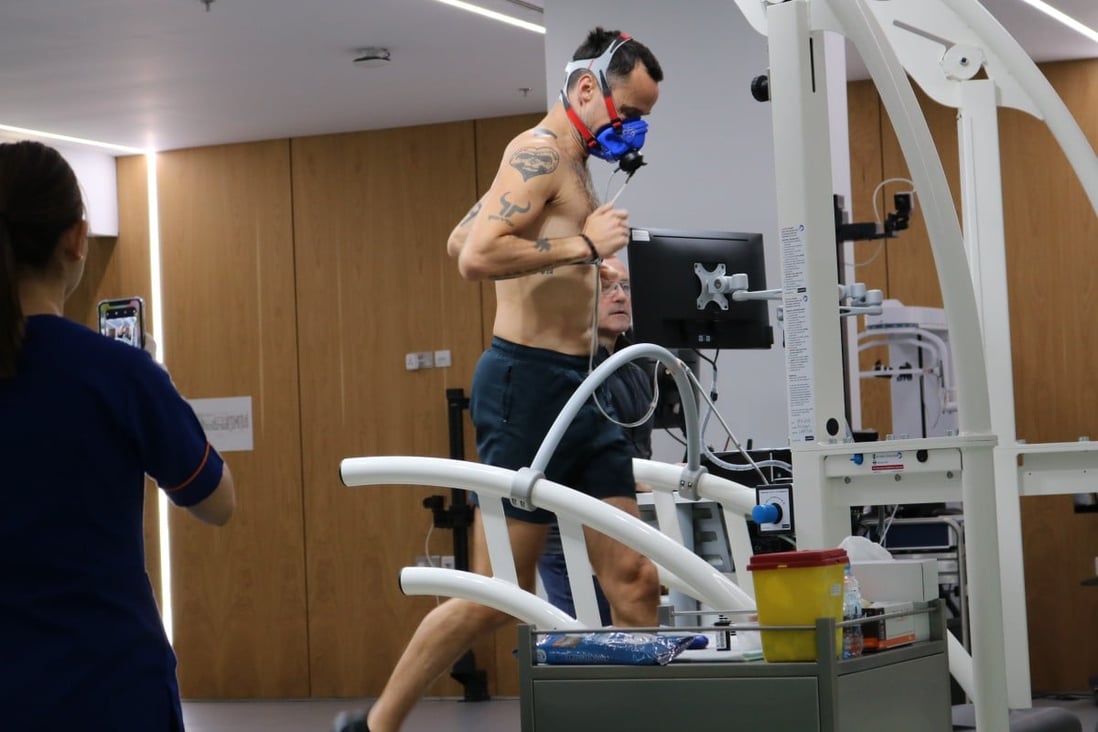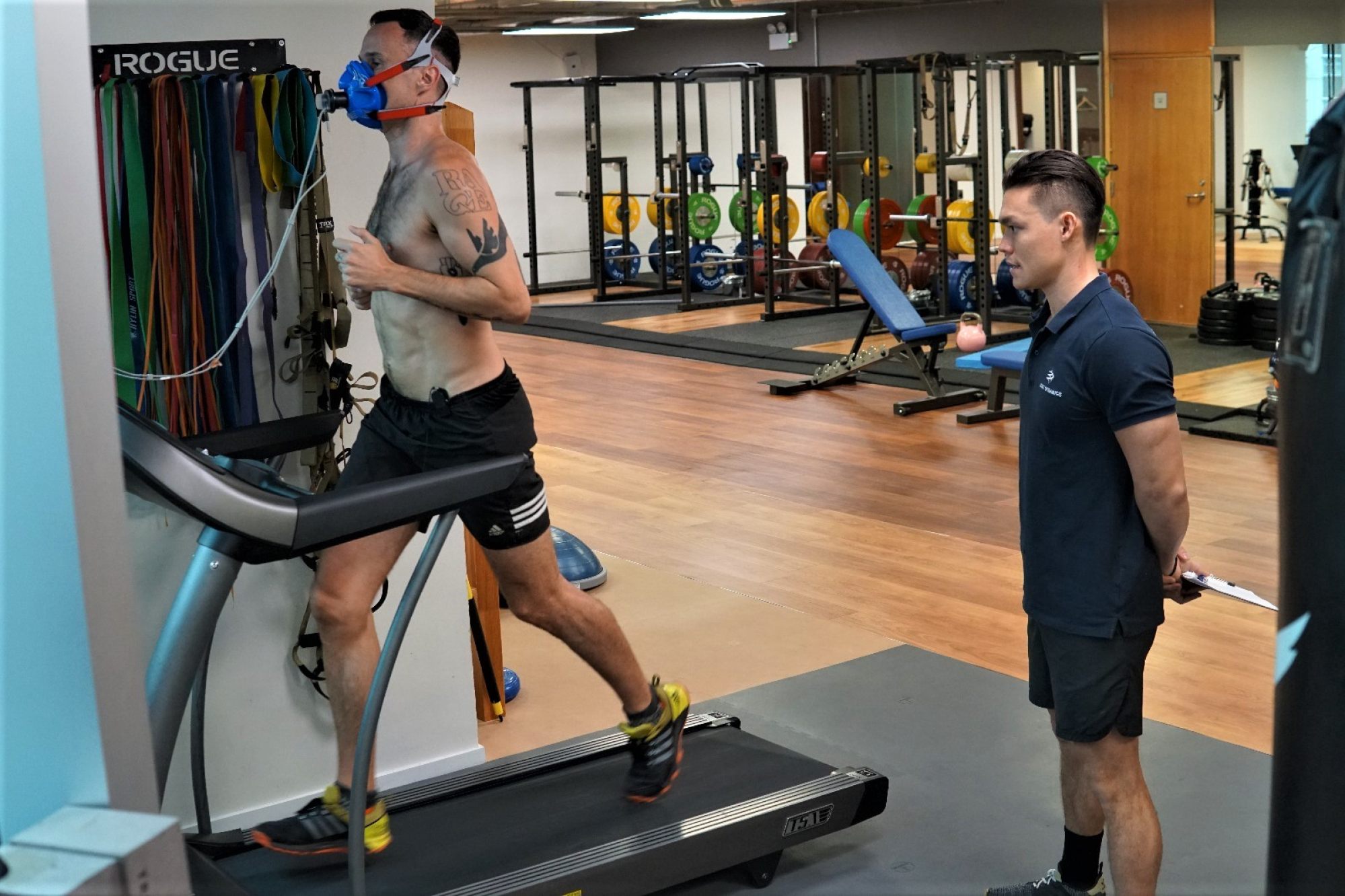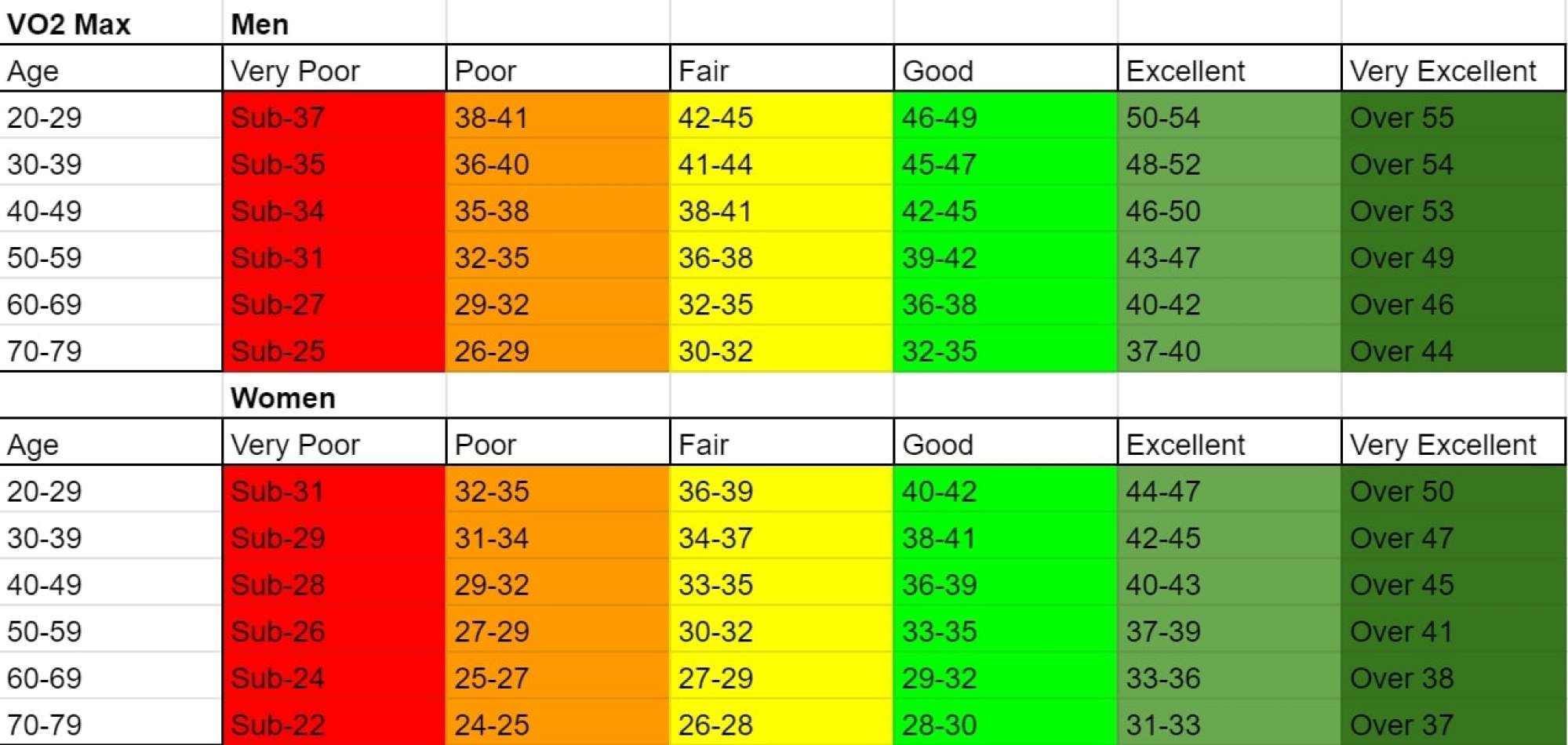
The most famous endurance athletes in the world have a jaw-droppingly high VO2 max. While the big numbers sound impressive, what does it actually mean?
It stands for Volume O2 (oxygen) maximum – which means the maximum amount of oxygen a person can use during exercise. The numbers assigned are measurements of millilitres of oxygen per minute.
That might just sound like a fancy way of saying how fit you are, but in reality fitness has many variables that can effect your performance.
VO2 max is referring to one aspect of fitness, it is somewhat fixed by your genetics (though this is debated) and is relative to things like your age, weight and muscle mass. While it is a predictor of your potential, it won’t automatically translate into good or bad performances without the accompanying training.

What is a good VO2 max?
Lance Armstrong had a Vo2 max in the 80s. Champion mountain runner Kilian Jornet has one close to 90. Joan Benoit, 1984 Olympic Marathon champion had 78. In all likeness, yours is not that high. Here is a table that roughly outlines what is considered very poor to very excellent.

Weight and VO2 max
VO2 max scores need to be contextualised by weight. A lighter person needs to convert less oxygen per minute per kilogram of weight, than a heavy person, to achieve a better VO2 max score because, in theory, a heavy person has to transport more oxygen for the same use. They need more oxygen because they have more muscles.
Therefore, you can differentiate absolute VO2 max and relative VO2 max. The former is litres of oxygen per minute. The latter is litres of oxygen per kilogram of body weight per minute.
How to use heart rate zones when training for running, rowing, cycling or other endurance sports
But given weight can be made up of anything from muscle, bone or fat, it is an oversimplification. As muscle is the only one of the three that uses oxygen, a more accurate variable to contextualise VO2 max is lean muscle mass. So, dividing by lean muscle mass, rather than by weight, will give an accurate comparison between athletes.
How to measure your VO2 max
The most accurate way is to do a test at a specialised gym, where you wear a mask on a treadmill, stationary bike or rowing machine, and it measures your intake and outtake of oxygen. If this is not possible, there are less accurate online calculators.
Why should you care and how to train your VO2 max?
Though your score may indicate your potential, it is not that useful in predicting your performance. There are so many variables that go into a performance. In fact, VO2 max is a better indication of overall health and work capacity, rather than performance at a specific time.
In some ways, you should not worry about your VO2 max because there is a limited amount you can do to change it. The traditional school of thought says you can train your VO2 max to improve by five to 15 per cent. The best way to promote this growth is high-intensity training at your maximum effort. Even if your VO2 max is determined by your genetics, you are likely not yet at your potential, so there is still cause to train.
More recent anecdotal evidence suggests you can influence your VO2 max, but it will take a long time and many hours of consistent training just below your anaerobic threshold (sometimes called tempo sessions).
For a variety of reasons, a varied training programme is the best approach to performance. For long-distance events, around 80 per cent of your sessions should be relatively easy and not at your maximum. So, whichever is true about your VO2 max, a good training programme will benefit it either way by including a range of intensities.







